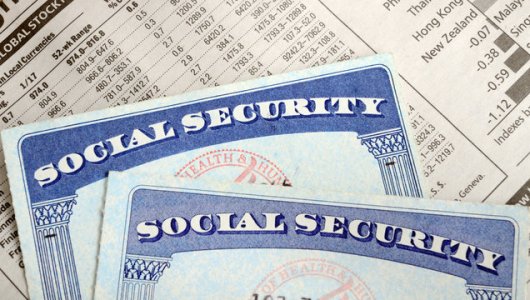Millions of seniors will soon see double Social Security payments in their accounts
- Replies 0
There are times when the calendar itself brings a surprise for those relying on monthly benefits.
For millions of Americans, this quirk means extra money will arrive earlier than expected, creating a rare boost that many will notice in their bank accounts.
While the adjustment is temporary and comes with a trade-off in the following month, it still provides a welcome sight for recipients.
For some, the payout could even climb into the thousands, giving households some breathing room as expenses continue to rise.
This week, the Social Security Administration is sending out a rare double payment worth up to $5,108 for those who qualify.
The shift only affects Supplemental Security Income, or SSI, which is paid to about 7.4 million people nationwide, including seniors, disabled individuals, and those with very limited resources.
The reason for the extra payment is simple—the first of the month falls on a holiday, which moves September’s check to Friday, August 29.
As a result, beneficiaries will receive one payment at the start of August and another at the end, but there will be no SSI deposit during September.

This isn’t the first time this has happened. Earlier this year, February brought two SSI checks, which meant no deposit in March, and a similar situation happened in June after an early May payment.
The cycle will repeat again in October when SSI recipients will see deposits on October 1 and October 31, leaving November without one.
The last double payment of the year is scheduled for December 31, which will count as January 2026’s benefit.
It’s important to note that these calendar quirks only apply to SSI recipients and do not affect those receiving standard retirement or survivor benefits.
Those benefits follow their own schedule depending on the date of birth or whether payments began before May 1997.
Recipients born between the 1st and 10th of the month are paid on the second Wednesday.
Also read: When your August 2025 Social Security check will arrive—exact dates and tips to plan ahead
Those with birthdays between the 11th and 20th receive theirs on the third Wednesday, and anyone born after the 20th is paid on the fourth Wednesday.
Recipients who began collecting before May 1997 are on a separate schedule, receiving their benefits on the third of each month.
For the highest earners, the maximum Social Security benefit in 2025 reaches $5,108 per month, totaling $61,296 annually.
Achieving this maximum requires a salary history hitting the wage base limit—currently $176,100—for 35 consecutive years.
On top of that, benefits must be delayed until age 70, since claiming earlier reduces the maximum payout to $4,018.
Most Americans will not qualify for the top benefit amount. As of May 2025, the average Social Security payment stood at $2,002.39, while SSI checks remain much smaller, capped around $1,415 per month for individuals.
Also read: Worried about your SSI or veterans’ benefits? Here’s what the delayed payments mean for you—and what’s changing next
For about one-third of SSI recipients, benefits are combined with standard Social Security, which means some months can bring as many as three separate payments.
The SSA advises anyone missing a payment to wait three business days before contacting the agency.
Financial experts remind workers that saving early and using retirement accounts such as 401(k)s and IRAs are critical steps for supplementing Social Security.
Many employers match contributions to 401(k) plans, while IRAs provide flexibility and tax advantages to grow retirement income over time.
Shannon Benton, Executive Director of the Senior Citizens League, advises that maxing out contributions should be a priority whenever possible.
Small steps, combined with smart timing on when to claim Social Security, can make a meaningful difference in retirement income.
Read next: Millions to see Social Security checks arrive early next week

Do you think these double payment months are helpful or confusing for seniors on fixed incomes? Would you prefer the money to come early or on a steady month-to-month schedule? Share your thoughts and experiences in the comments below.
For millions of Americans, this quirk means extra money will arrive earlier than expected, creating a rare boost that many will notice in their bank accounts.
While the adjustment is temporary and comes with a trade-off in the following month, it still provides a welcome sight for recipients.
For some, the payout could even climb into the thousands, giving households some breathing room as expenses continue to rise.
This week, the Social Security Administration is sending out a rare double payment worth up to $5,108 for those who qualify.
The shift only affects Supplemental Security Income, or SSI, which is paid to about 7.4 million people nationwide, including seniors, disabled individuals, and those with very limited resources.
The reason for the extra payment is simple—the first of the month falls on a holiday, which moves September’s check to Friday, August 29.
As a result, beneficiaries will receive one payment at the start of August and another at the end, but there will be no SSI deposit during September.

Millions of seniors will soon see double Social Security payments in their accounts. Image Source: Adobe Stock
This isn’t the first time this has happened. Earlier this year, February brought two SSI checks, which meant no deposit in March, and a similar situation happened in June after an early May payment.
The cycle will repeat again in October when SSI recipients will see deposits on October 1 and October 31, leaving November without one.
The last double payment of the year is scheduled for December 31, which will count as January 2026’s benefit.
It’s important to note that these calendar quirks only apply to SSI recipients and do not affect those receiving standard retirement or survivor benefits.
Those benefits follow their own schedule depending on the date of birth or whether payments began before May 1997.
Recipients born between the 1st and 10th of the month are paid on the second Wednesday.
Also read: When your August 2025 Social Security check will arrive—exact dates and tips to plan ahead
Those with birthdays between the 11th and 20th receive theirs on the third Wednesday, and anyone born after the 20th is paid on the fourth Wednesday.
Recipients who began collecting before May 1997 are on a separate schedule, receiving their benefits on the third of each month.
For the highest earners, the maximum Social Security benefit in 2025 reaches $5,108 per month, totaling $61,296 annually.
Achieving this maximum requires a salary history hitting the wage base limit—currently $176,100—for 35 consecutive years.
On top of that, benefits must be delayed until age 70, since claiming earlier reduces the maximum payout to $4,018.
Most Americans will not qualify for the top benefit amount. As of May 2025, the average Social Security payment stood at $2,002.39, while SSI checks remain much smaller, capped around $1,415 per month for individuals.
Also read: Worried about your SSI or veterans’ benefits? Here’s what the delayed payments mean for you—and what’s changing next
For about one-third of SSI recipients, benefits are combined with standard Social Security, which means some months can bring as many as three separate payments.
The SSA advises anyone missing a payment to wait three business days before contacting the agency.
Financial experts remind workers that saving early and using retirement accounts such as 401(k)s and IRAs are critical steps for supplementing Social Security.
Many employers match contributions to 401(k) plans, while IRAs provide flexibility and tax advantages to grow retirement income over time.
Shannon Benton, Executive Director of the Senior Citizens League, advises that maxing out contributions should be a priority whenever possible.
Small steps, combined with smart timing on when to claim Social Security, can make a meaningful difference in retirement income.
Read next: Millions to see Social Security checks arrive early next week
Key Takeaways
- Millions of SSI recipients will receive two payments in August, one on August 1 and another on August 29, because September 1 falls on Labor Day.
- The double deposit is worth up to $5,108 for those with the maximum benefit.
- Similar early-payment shifts will happen again in October and December, leaving the following months without SSI checks.
- These calendar quirks affect only SSI recipients and not standard retirement or survivor benefit payments.






